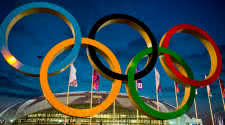Bodybuilding and the Olympics

Body Building is without Question the most Difficult Sport on the Planet!
How can bodybuilding get to be an Olympic sport? What steps need to be taken?
The greatest dream of any athlete has to be competing in the Olympics - the thrill of victory and the agony of defeat! Bodybuilders are no exception. Our quest for the gold has been a long one, but as
they say, it's only just begun.
The Charter of the International Olympic Committee (IOC) sets up the procedure bodybuilding must follow to get into the games of the Olympiad. All Olympic sports for men must be widely practiced in
at least 50 countries on three continents. Women's sports must be practiced in at least 35 countries on three continents. The Charter requires that athletes in Olympic sports be able to train and
compete under similar conditions anywhere in the world. Admitted sports must also involve physical achievements that can be assessed with a minimum of human error.
There are two major steps required for bodybuilding to get into the Olympics. First, the IOC must recognize an International Sports Federation for bodybuilding. This would logically be the IFBB
(International Federation of Body-builders), but this decision hasn't been made yet. Once the IOC recognizes a federation, that federation can apply to the IOC for admission as an Olympic sport. The
federation works hand-in-hand with the IOC to determine such things as the number of weight categories, rules for judging and disqualification, drug testing and other technical procedures.
Once the IOC has approved the application of the federation, a minimum of six years must pass before athletes can compete in the Olympic Games. (This allows time for qualifying meets and creation of
an administrative structure.) It is then up to the Organizing Committee of the nation holding the Games to select bodybuilding as one of the events they want to host in their country. So it looks
like it will be 1996 before our sport can make it into the Olympics. Just 100 years after the start of the modern Olympic Games. Watch for more Olympic updates in Forever Natural during the coming
months.
I've seen bodybuilders in natural shows with enlarged nipples. Isn't this a sign of steroid use?
This enlargement of the area around the male nipple is known medically as gynecomastia. Many bodybuilders use a shorter version of the name: gyno. Dr. Harold Carlson, a nationally recognized expert in
gynecomastia, told fitFLEX that gyno is an inappropriate growth of the tissues in the breast, brought about by an imbalance in the body's hormone levels. While this imbalance can result from natural
causes, in many cases it is the result of drug abuse.
When a steroid is introduced into the body, it makes its way into the blood and is carried to the liver. Depending on the particular steroid, it is either metabolized in the liver or passed through in
an unaltered state. In either case it circulates throughout the body, reaching the breast, the pituitary gland and many other organs.
Some steroids affect the breast tissue directly, blocking the androgens (male hormones) that inhibit the growth of the breasts. This allows the estrogens (female hormones) that exist naturally in all
males to act unopposed on the breast. Other steroids act on the pituitary gland, causing the pituitary to shut down its production of two hormones: LH (luteinizing hormone) and FSH (folice stimulating
hormone). In the absence of these hormones, the testes reduces its production of male hormone, upsetting the natural balance between estrogens and androgens in the body and allowing gyno to develop.
While gynecomastia is not a major medical problem and rarely results in a malignancy, Dr. Carlson emphasizes that gyno is a visible sign of the greater effects that steroids have on the body. "It's
a sign that you have altered your body's biological system, and it's a warning that you've been fooling with Mother Nature."
After a period of drug abuse (which can range from six months to a year or more, depending on the type and level of drug usage), the breast begins to harden and form scar tissue. This fibrous tissue is
permanent, and once it forms, it can only be removed by surgery. The best way to avoid gynecomastia, therefore, is to stay off drugs entirely. Remember, once it hardens, gyno-like a tattoo-is forever.